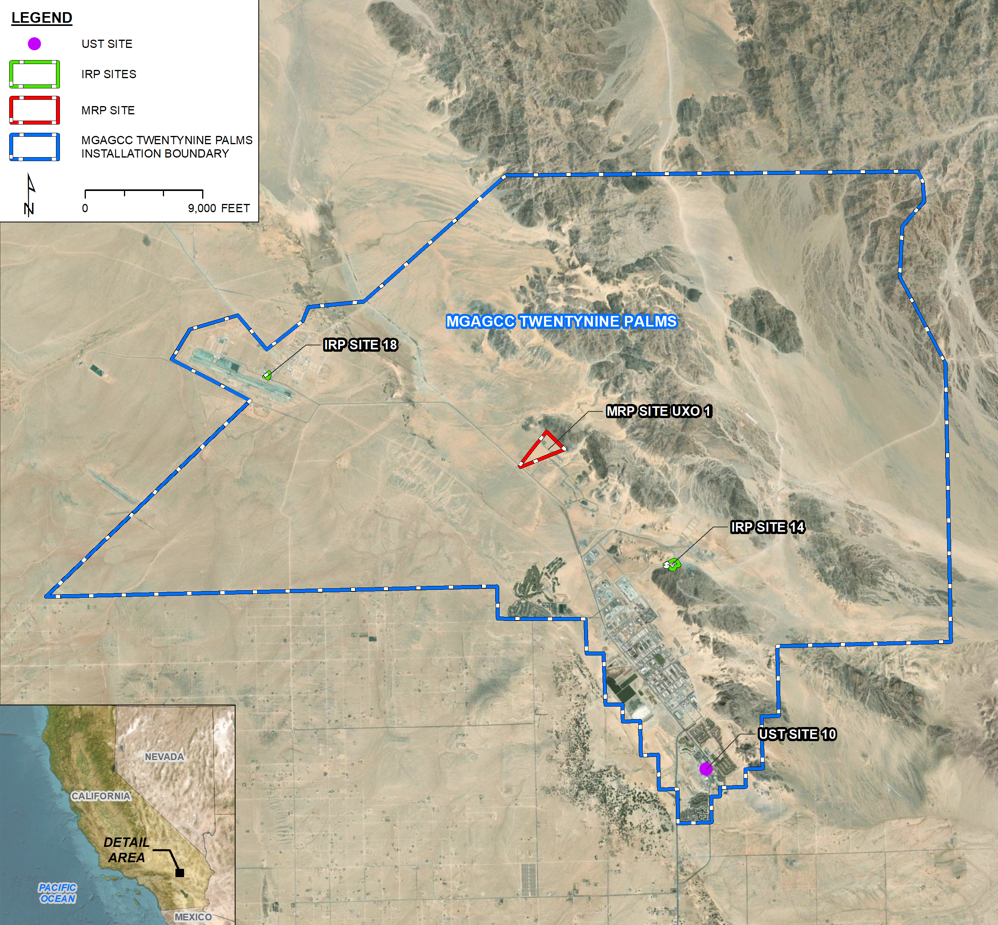The current Installation Restoration Program (IRP), Munitions Response Program (MRP), and Underground Storage Tank (UST) sites at Marine Corps Air Ground Combat Center (MCAGCC) Twentynine Palms are managed under the Department of the Navy’s (Navy) Environmental Restoration Program (ERP). The overarching goal of Navy’s ERP is to protect human health and the environment from past hazardous waste practices and releases at Navy ERP sites. The interactive map below shows which sites are being addressed under the Navy’s ERP. At MCAGCC Twentynine Palms, the Naval Facilities Engineering Systems Command Southwest (NAVFAC SW) in San Diego, California manages the ERP.
The Navy’s program has four open ERP sites at MCAGCC Twentynine Palms. Sixty-four ERP sites have been closed. Of the four open sites, two are IRP sites, one is a UST site, and one is an MRP site.
A link to an overview of past and current environmental investigations and cleanup activities completed at each of the four open IRP, MRP, and UST sites can be found by clicking the site name on the map.
CLICK HERE for acronym definitions and a glossary of the Navy’s ERP terms.
CLICK HERE for detailed information on the Navy’s ERP.
CLICK HERE for additional site-specific documents for each IRP site in the Navy’s MCAGCC Twentynine Palms Administrative Record.
